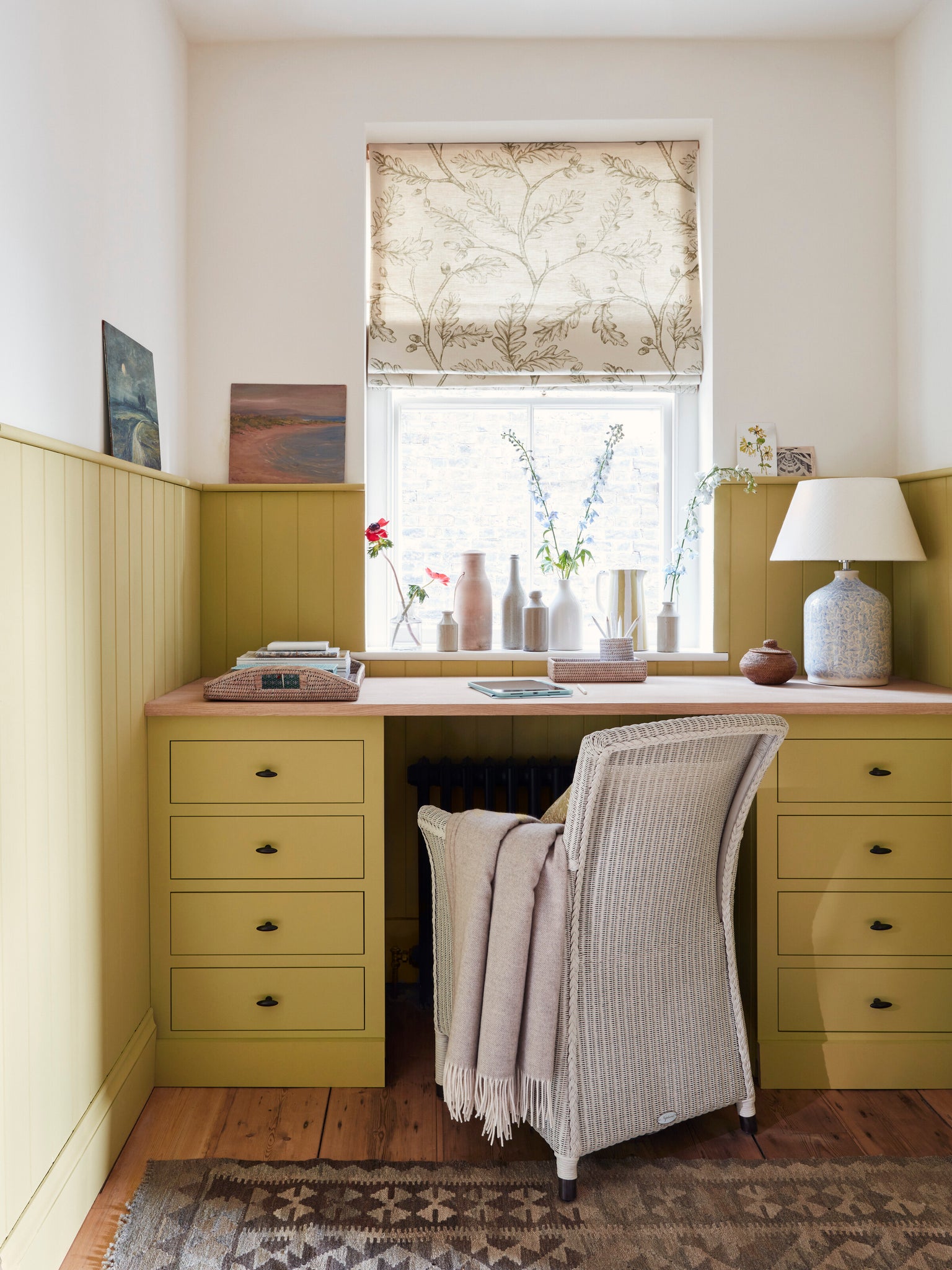Hopefully, by now, you’ll have a better idea of what kind of window treatment is the right choice for you and your window (and if you don’t, head back to part one). So now we can get down to the nitty gritty. From textile choices to curtain poles, keep reading for our advice on curtain and Roman blind details.
Curtains, in detail
Textiles: almost any textile will work for curtains provided it has enough fluidity (our Archie linen, for instance, is too stiff), so you can go for light and airy sheer linen (such as Imogen), deeply cosy velvet and wool, or a mid to heavy-weight linen (like Hugo, Chloe, Harry or Linara at Neptune) for something in the middle. Pattern works well too, but if you don’t want to go fully patterned you can also have the leading edge or bottom section made in a different plain or patterned fabric.


Lining, interlining & fullness: how full your curtains are will largely depend on the lining and interlining. Even a lighter linen such as Imogen will have a heavier look when fully lined. We’d pretty much always recommend a regular lining – it’ll give just enough body and protect your face fabric from the sun – but there’s also the option of blackout lining with our service. Interlining adds a luxurious fullness and extra thermal properties, so we recommend it for draughty houses and doors. Use standard interlining for heavy fabrics like wool and velvet, and a thicker interlining for the likes of linen. Fullness is also, of course, determined by how much fabric makes up your curtains. If you’re going for a lighter face fabric and lining combination, then definitely have your curtains made with more fabric, otherwise they could look scant.
Length: in short, always go full length. Curtains that stop at the windowsill tend to disrupt the proportions of the room (like trousers cut unflatteringly short). We usually make our curtains so they just graze the floor, but longer curtains that puddle slightly can be very romantic.
Headings: there are all sorts of ways you can head a curtain but the three we think are both smartest and most timeless are cartridge and pleat headings. Cartridge is the most contemporary and is great if you want a minimal look – the fabric is simply stitched into soft folds. Double and triple pleat headings are a touch more traditional although still crisp and tailored. We’d recommend double pleat for smaller windows and triple for larger (although the latter isn’t suitable for very thick curtains).
Poles: generally speaking, we prefer a pole to a pelmet. No matter how simple a pelmet, it’ll always feel very traditional and we just think a pole is a more timeless option. A pelmet does work well though when you have an odd gap between the top of the window and the ceiling but you want your curtains to go to the ceiling, as it’ll hide the gap (we can make bespoke pelmets as part of our Home Design Service, but not our normal curtains & blinds service. All our fabrics are available by the metre though, in case you want to have one made yourself). When it comes to poles, choose an understated finial and finish (something we’ve already done for you with our own options) so they won’t date. And we’d definitely consider the lined rings of our premium poles if it matters to you that they draw quietly. Finally, glider poles are a good option if you don’t want to see the pole at all or you want to hang your curtains from the ceiling.

Roman blinds, in detail
Textiles: like curtains, almost anything is possible, although velvet is too heavy. With our service, you can also add borders (where you can use velvet) to the sides, bottom or both to add an accent of colour or pattern.
Linings & interlinings: all the same options as curtains are available on our Roman blinds, and will affect the thermal and blackout properties of the blind as well as its visual weight. A favourite combination of ours is a lighter linen blind with heavier curtains (or vice versa) in a bedroom. Together they give you a complete blackout in summer when the nights and mornings are light, and using the blind alone lets more light in during winter.
Recessing: with a Roman blind, you have the option of either mounting it inside your window’s recess or in front of it. Which you choose is up to you, but bear in mind that recessed blinds make it hard to place things on the windowsill, and blinds in front of the recess can’t be combined with curtains. Mounting the blind in front is a good trick for making smaller windows appear larger though.


Whether you know exactly what you’d like and want to get started making it a reality, or you’re not sure what’s the best window treatment for you, we can help in store. Simply pop in to chat to the team at your local Neptune about our curtains and blinds service.
